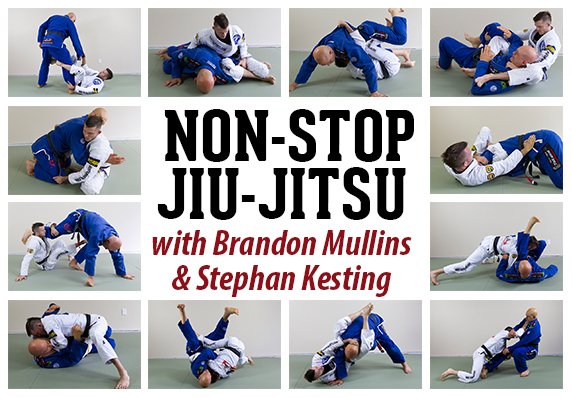Speed kills! When it comes to blowing through your opponent’s defenses there’s nothing like being just a little bit faster than him. That way you’re always a step or two ahead, and he never has the chance to catch up.
But how exactly do you do this?
Well, have you ever heard of something called Hick’s Law? It’s an idea that comes from academic research, and has been applied to areas as diverse as computer interface design and analysing online dating. But it’s also super-relevant to jiu-jitsu!
Hick’s Law basically says that decision-making time increases exponentially as you increase the number of options available to you. Choosing between four options is slower than choosing between two options. Choosing between eight options is slower than choosing between four.
More options equals slower decisions.
Which is why in jiu-jitsu it’s sometimes good to have LESS initial options from a certain position.
The way to develop fast attacks is to have one specific technique that you lead with from each individual position. This way anytime you end up in a certain position then – BOOM – you go with that attack. No thinking, no decision-making, no delay.
By having an automatic ‘Plan A’ that gets used as soon as you get into a position you move so quickly that you never give your opponent a chance to formulate his defensive plan.
I’m not saying that you don’t need to learn a lot of different variations, options and followups for a technique; of course you do! You’ll learn them and train them, but only use them if you run into problems with your initial movement. That way you get the best of both worlds: a fast initial attack, combined with a deep understanding of the position so that you can attack in combinations if your initial attack gets doesn’t work for some reason.
Let’s look at a few examples…
In boxing your Plan A might be the jab. If your opponent pauses in front of you then you throw a jab in his face. If he steps forward then you throw a jab in his face. If he drops his hands then you throw a jab in his face. You get the idea.
The exact same idea applies in grappling…
If you end up in rear mount on your opponent’s back in No Gi, then your default attack should be the Rear Naked Choke. Unless there’s a really good reason to do something different, you should try to RNC the hell out of him.
Or let’s say that you’ve just hoisted your opponent up into the X Guard. From X Guard your Plan A option should be the Stand-up Sweep: kick his legs away, get up on your elbow, get to your feet with his leg on your shoulder, and then run him down.
Yes, there are other submissions from Rear Mount. And yes, there are other sweeps from X Guard. But when the chips are down you go to your Plan A for that position.
If Plan A doesn’t work – if your opponent counters it or defends effectively – only then do you go to Plans B, C, D and E…
In the following in-depth video Brandon ‘Wolverine’ Mullins shows his Plan A from the de la Riva guard. The de la Riva guard is a modern form of open guard that every serious BJJ student has to be familiar with.
Brandon calls this move the ‘Ball and Chain’ sweep, which reflects how your opponent will feel once you’ve locked your initial grips into place. He’s pulled off this exact move in many different competitions, so you know it works (and we’ve included footage from some of those competitions at the end of the video to prove it).
Check it out in the video below (which is taken from Volume 3 in the Non-Stop Jiu-Jitsu instructional set).
The Ball and Chain sweep above is from Non-Stop Jiu-Jitsu, which is a 4 volume BJJ instructional that world champion Brandon ‘Wolverine’ Mullins and I put together for you.
This brand new Grapplearts instructional will give you an in-depth understanding of the modern open guard, including the exact techniques that are being used at the highest levels of competition. Non-Stop Jiu-Jitsu is now available by clicking here.
The post The Easiest Way to Develop Fast Guard Sweeps appeared first on Grapplearts.

